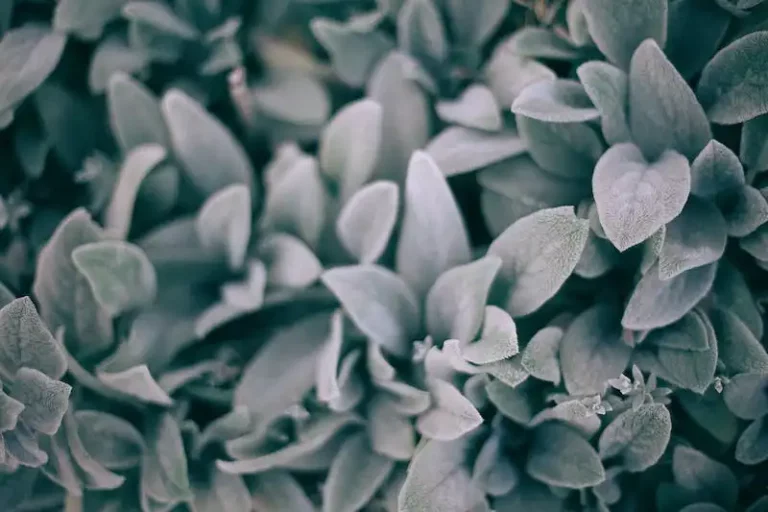Spinach is a leafy green vegetable that is full of nutrition. It is a member of the chenopodiaceae family, which also includes beets and chard. Spinach plants are usually grown from seeds, and they require a consistent soil moisture level and a well-drained site. The best planting time for spinach depends on the temperature in your area. In cooler regions, spinach can be planted throughout the growing season, while in warmer areas it is better to plant in the spring or fall, depending on the potential risk of freezes.
Spinach needs about 6 to 8 hours of full sun each day to grow well. It can tolerate some shade, but it won’t grow as quickly or produce as much. Spinach is a cool-season crop, so it tends to bolt, or go to seed, when temperatures rise above 75 degrees Fahrenheit (24 degrees Celsius). While spinach plants need consistent moisture, they should not be overwatered as this can lead to fungal diseases. Mulch can be used to help retain soil moisture and suppress weeds.
When the spinach plants are about 3-4 weeks old and have developed their true leaves, they need to be thinned so that they are spaced about 4-6 inches apart. Thin the plants by pulling out the smaller, weaker ones, leaving only the strongest ones to grow. Thinned spinach plants can be used in salads or as baby spinach. The harvested spinach leaves can be stored in the refrigerator in a sealed plastic bag or a bowl with a damp paper towel for up to a week.
Spinach plants have high nutrient requirements, especially for iron. They can benefit from regular fertilizing with a balanced vegetable fertilizer. If the spinach leaves start to look pale or yellowish, it is a sign that they need more nutrients. However, be careful not to overfertilize, as this can lead to excessive leaf growth and poor flavor.
Spinach plants can be susceptible to a range of pests, including aphids, cabbage loopers, and leaf miners. Regular monitoring and troubleshooting can help identify and control these pests. In addition, crop rotation and good garden hygiene practices can help prevent pest infestations.
In conclusion, growing a full-grown spinach plant requires proper care and attention. From seed to harvest, spinach plants need consistent soil moisture, well-drained soil, and a sunny location. Thinning the plants and providing them with proper nutrition and pest control will ensure a good harvest. So why not add this nutritious and delicious vegetable to your garden? Try growing your own spinach plants and enjoy the taste of fresh, homegrown greens!
How to Grow Spinach
Growing spinach is a simple and rewarding process. It can be grown in your own backyard or in containers on your porch or balcony. Here are the steps to successfully grow spinach:
- Choose the right location: Spinach prefers cool weather, so it’s best to plant it in early spring or late summer. It thrives in partial shade but can also tolerate full sun. Make sure the ground is well-draining and amend it with compost or organic matter.
- Sow the seeds: Plant the spinach seeds about 1/2 inch in depth and 1 inch apart. Keep the soil moist and water the seeds thoroughly. Spinach seeds will germinate in about 7-14 days.
- Care for the plants: Once the plants have grown their first true leaves, thin them to a distance of 3-6 inches apart. Water them consistently to keep the soil moist but not waterlogged. Spinach plants don’t tolerate extreme heat or dry conditions, so make sure to provide them with enough water in summer.
- Protect your plants: Spinach plants are prone to pests such as flea beetles and moth larvae. Use insecticidal soap or neem oil to control these pests. Mulching around the plants can also help to retain moisture and suppress weeds.
- Harvesting: Spinach can be harvested when the leaves are large enough to use. You can either pick individual leaves or cut the whole plant about an inch above the ground. Spinach leaves taste best when they are young and tender.
Spinach is a versatile vegetable that can be used in a variety of dishes, from salads to stir-fries. It is rich in vitamins and minerals, making it a healthy addition to your diet. Whether you grow it in your backyard or in pots on your porch, spinach will thrive with proper care and attention.
If you encounter any issues while growing spinach, such as fungal diseases or yellowing leaves, it is important to address the problem as soon as possible. Remove any affected leaves and send them to your local agricultural extension for analysis. This will help you identify the potential cause and take appropriate action.
In addition to spinach, you can also grow other similar leafy greens such as kale and celery. These plants have similar growing requirements and can be a great addition to your vegetable garden. Whenever you’re having trouble with your spinach, a quick Google search or a call to your local garden center can provide valuable advice to help you troubleshoot the problem.
How to Plant Spinach
Spinach is a versatile and nutritious leafy green that can be grown easily in your garden or even in containers in your kitchen. By following a few simple steps, you can ensure a bountiful harvest of this delicious and healthy vegetable.
1. Seed Requirements: Spinach plants can be grown from seeds. Choose a variety such as Bloomsdale, which has a great taste and is resistant to bolting. Plant the seeds directly in the ground or in pots, as spinach doesn’t transplant well.
2. Planting: Spinach needs well-draining soil with a pH level of 6.0-7.0. Prepare the soil by adding compost or well-rotted manure. Plant the seeds about 1/2 inch deep and space them about 4-6 inches apart.
3. Light and Temperature: Spinach prefers cool temperatures and can be planted in early spring or late summer. It requires at least 6 hours of sunlight per day, but it can tolerate light shade as well.
4. Watering: Spinach plants need consistent moisture to thrive. Water them regularly, keeping the soil moist but not waterlogged. Monitor the soil moisture and water whenever it feels dry. Avoid overwatering to prevent root rot.
5. Mulch: Apply a layer of organic mulch around the plants to retain moisture, suppress weeds, and regulate soil temperature.
6. Fertilizer: Spinach is a heavy feeder and benefits from regular feeding. Apply a balanced, water-soluble fertilizer once a month.
7. Support: If you’re growing spinach in containers, use stakes or trellises to support the plants as they grow.
8. Caring for Pests and Diseases: Spinach can be susceptible to common pests such as aphids and flea beetles. Monitor your plants regularly and take action at the first sign of trouble. Prevent diseases like anthracnose by avoiding overhead watering.
9. Harvesting: Spinach leaves can be harvested when they reach a desirable size, usually around 6-8 weeks after planting. You can pick the outer leaves for baby spinach or wait until the plant is fully mature for the larger leaves.
10. Storing and Usage: After harvesting, remove any damaged or discolored leaves. Spinach can be stored in the refrigerator for up to a week. It can be used in a variety of dishes, including salads, soups, and smoothies. Spinach also freezes well for long-term storage.
By following these steps, you can enjoy a steady supply of fresh and nutritious spinach throughout the growing season. Happy gardening!
When to Plant
The best time to plant full-grown spinach plants depends on your location and the specific climate conditions. In India, spinach can be planted throughout the year, with the exception of the very hot summer months. The cool-season is the ideal time for planting spinach, as it prefers temperatures between 35 and 75 degrees Fahrenheit.
Before planting, it is important to prepare the soil by removing any weeds and adding organic matter to improve moisture retention. Spinach plants need well-drained soil and regular watering to support their growth. It is essential to keep the soil moist but not waterlogged, as excessive moisture can lead to fungal diseases.
Seeds can be sown directly into the garden or started indoors in pots. When planting in pots, choose shallow ones to allow for proper root development. Seeds should be sown about 1 inch apart and covered with a thin layer of soil. Maintain consistent moisture by watering the pots frequently.
Germination usually takes around 7 to 14 days. Once the plants have two to three small true leaves, they can be thinned to one plant every 4 to 6 inches. This spacing ensures enough room for the plants to grow and receive adequate sunlight. Spinach plants require at least 6 hours of sun each day to thrive.
To promote healthy growth and prevent pest problems, it is important to provide support for the plants as they grow. A simple tomato cage or trellis can help keep the plants upright. Regularly monitor the plants for pests, such as aphids, and treat them if necessary. Aphids can be controlled by spraying the plants with a gentle jet of water or using an organic insecticide.
Depending on the variety, spinach can be harvested within 40 to 60 days after planting. Leaves can be harvested individually, or the whole plant can be cut at ground level. Regular harvesting encourages new leaf growth and prolongs the production season.
In some regions, spinach can overwinter and continue to produce leaves throughout the winter months. To protect the plants from frost, cover them with a layer of mulch or row cover. The leaves can be harvested even in the colder months if the temperature stays above freezing.
With proper care and attention, spinach plants can be a rewarding addition to your home garden. Whether you are a beginner or an experienced gardener, learning about the basic steps of planting and caring for these leafy greens will help you have a successful harvest.
Selecting a Planting Site
When selecting a site to plant your full grown spinach plant, there are a few factors to consider. Spinach plants prefer well-drained soil that contains plenty of organic matter, so choose a location that has good drainage and is not prone to flooding.
The planting site should also receive full sunlight, although spinach will tolerate some shade. Aim for at least six hours of direct sunlight each day for optimal growth.
The soil pH should be between 6.0 and 7.5, which is slightly acidic to slightly alkaline. If your soil is outside this range, consider adjusting it with the appropriate amendments to create the ideal growing conditions for your spinach plants.
Spinach requires consistent moisture to thrive, so choose a location that is easily accessible to a water source. The soil should be kept evenly moist, avoiding waterlogged conditions that can lead to root rot. Water your plants frequently, especially during dry spells, to ensure they get enough water to grow properly.
Spinach is a cool-weather crop and prefers temperatures between 35°F and 75°F. It can tolerate light frosts, but extreme cold temperatures can damage the plants or cause them to wilt. In colder regions, consider planting spinach in early spring or late fall for best results.
Another important consideration is companion planting. Spinach grows well with crops such as peas, radishes, and cucumbers, which can provide shade and act as a natural mulch to keep the soil cool and retain moisture. Avoid planting spinach near crops such as strawberries or tomatoes, which can compete for nutrients and space.
When planting spinach, it’s important to prepare the site properly. Start by clearing the area of any weeds or grass. Loosen the soil with a garden fork or tiller and remove any rocks or debris. Incorporate well-rotted manure or compost into the soil to improve its fertility and structure.
Consider using a slow-release fertilizer to provide essential nutrients for your spinach plants throughout the growing season. Follow the package instructions for application rates and timing.
After planting, keep an eye out for common pests like aphids and leaf miners. If you notice any infestations, treat them promptly using organic pest control methods.
Thin out your spinach plants as they grow to allow for better air circulation and prevent overcrowding. This will also ensure that the remaining plants have enough space and nutrients to grow properly. Simply remove the smaller or weaker plants, leaving behind the strongest ones.
When it comes to harvesting spinach, you can start picking the leaves when they are large enough to be used in the kitchen. Leave a few leaves on each plant to allow for regrowth. Harvesting from the outer leaves first will encourage new growth in the center and prolong the harvest period.
To overwinter your spinach crop, you can cover the plants with a layer of straw or leaves to protect them from frost. Mulching can also help conserve moisture in the soil and regulate temperature fluctuations.
If you encounter any issues or problems with your spinach plants, consult a gardening guide or seek advice from a local gardening expert. With proper care and attention, you can enjoy a bountiful harvest of healthy and delicious spinach from your garden.




